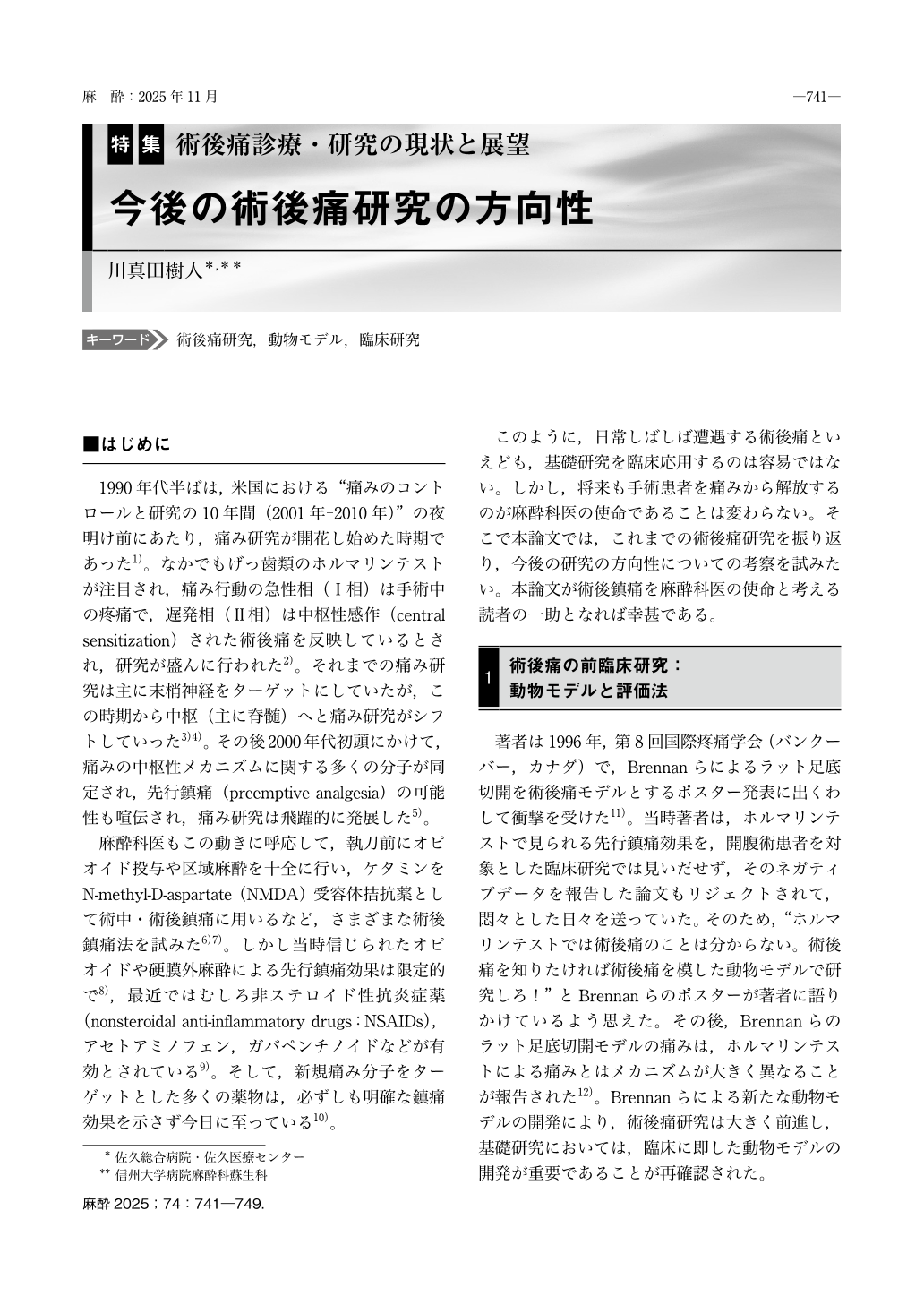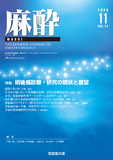Japanese
English
- 有料閲覧
- Abstract 文献概要
- 1ページ目 Look Inside
- 参考文献 Reference
はじめに
1990年代半ばは,米国における “痛みのコントロールと研究の10年間(2001年-2010年)” の夜明け前にあたり,痛み研究が開花し始めた時期であった1)。なかでもげっ歯類のホルマリンテストが注目され,痛み行動の急性相(Ⅰ相)は手術中の疼痛で,遅発相(Ⅱ相)は中枢性感作(central sensitization)された術後痛を反映しているとされ,研究が盛んに行われた2)。それまでの痛み研究は主に末梢神経をターゲットにしていたが,この時期から中枢(主に脊髄)へと痛み研究がシフトしていった3)4)。その後2000年代初頭にかけて,痛みの中枢性メカニズムに関する多くの分子が同定され,先行鎮痛(preemptive analgesia)の可能性も喧伝され,痛み研究は飛躍的に発展した5)。
麻酔科医もこの動きに呼応して,執刀前にオピオイド投与や区域麻酔を十全に行い,ケタミンをN-methyl-D-aspartate(NMDA)受容体拮抗薬として術中・術後鎮痛に用いるなど,さまざまな術後鎮痛法を試みた6)7)。しかし当時信じられたオピオイドや硬膜外麻酔による先行鎮痛効果は限定的で8),最近ではむしろ非ステロイド性抗炎症薬(nonsteroidal anti-inflammatory drugs:NSAIDs),アセトアミノフェン,ガバペンチノイドなどが有効とされている9)。そして,新規痛み分子をターゲットとした多くの薬物は,必ずしも明確な鎮痛効果を示さず今日に至っている10)。
このように,日常しばしば遭遇する術後痛といえども,基礎研究を臨床応用するのは容易ではない。しかし,将来も手術患者を痛みから解放するのが麻酔科医の使命であることは変わらない。そこで本論文では,これまでの術後痛研究を振り返り,今後の研究の方向性についての考察を試みたい。本論文が術後鎮痛を麻酔科医の使命と考える読者の一助となれば幸甚である。
From the mid-1990s to the early 2000s, the basic research on pain made significant progress, revealing the very likely possibility of central sensitization and preemptive analgesia in postoperative pain. However, when the findings based on this basic research were applied to clinical practice, most of the findings were not supported. This has been speculated to be because there was no appropriate animal model for postoperative pain, and thus the attempts to provide postoperative analgesia were based on differing pain mechanisms. Despite this unsuccessful past, an important mission for anesthesiologists is to relieve and control the postoperative pain experienced by surgical patients, both now and in the future. We anesthesiologists must therefore continue our research with the goal of developing highly effective postoperative pain management. In this paper, Ⅰ review the existing research concerning postoperative pain and consider the future direction of research in this field.

Copyright © 2025 KOKUSEIDO CO., LTD. All Rights Reserved.


